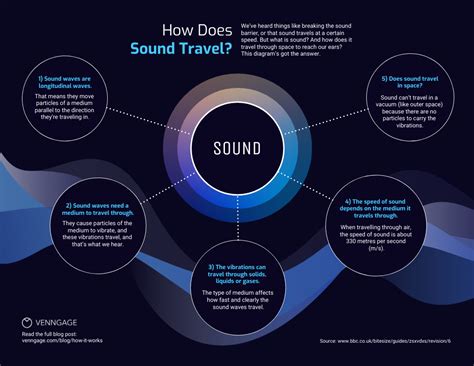Make Sound Travel Faster

Introduction to Sound and Its Speed
Sound is a form of energy that is produced by vibrations. When an object vibrates, it creates a disturbance in the air particles around it, which then carries the energy outward in all directions. The speed at which sound travels depends on the medium through which it is passing. In dry air at room temperature and atmospheric pressure, the speed of sound is approximately 343 meters per second. This speed can vary depending on the conditions of the medium, such as its temperature, pressure, and density.
Factors Affecting the Speed of Sound
Several factors can influence the speed of sound as it travels through different media. Understanding these factors is crucial for applications where the speed of sound is critical, such as in acoustics, aviation, and meteorology. The key factors include: - Temperature: The speed of sound increases with the temperature of the medium. In air, for every degree Celsius increase in temperature, the speed of sound increases by about 0.6 meters per second. - Pressure: While changes in pressure do affect the speed of sound, this effect is less significant than that of temperature in most practical situations. - Humidity: The presence of water vapor (humidity) in the air can slightly increase the speed of sound. - Density of the Medium: The speed of sound is inversely proportional to the square root of the density of the medium. This means sound travels faster in less dense materials.
Methods to Make Sound Travel Faster
Given that the speed of sound in air is relatively constant under standard conditions, making sound travel faster involves either altering the properties of the medium or using a different medium altogether. Here are some approaches: - Increasing Temperature: As mentioned, higher temperatures increase the speed of sound. However, this method is limited by the physical constraints of heating the air and is not practical for large-scale applications. - Using Different Media: Sound travels faster in solids than in gases. For instance, in steel, the speed of sound is about 5,960 meters per second, which is much faster than in air. Using solids for sound transmission can significantly increase the speed but is not always feasible due to the need for a direct physical path. - Utilizing Metamaterials: Researchers have been exploring the potential of metamaterials, which are artificial materials engineered to have properties not typically found in naturally occurring materials. These can potentially be designed to have unique acoustic properties, including the ability to manipulate the speed of sound.
Applications and Considerations
The ability to manipulate the speed of sound has various applications across different fields: - Acoustic Devices: Understanding how to alter the speed of sound can lead to the development of more efficient acoustic devices, such as speakers and microphones. - Non-Destructive Testing: In solids, the speed of sound can be used to test the integrity of materials without causing damage. - Medical Imaging: Techniques like ultrasound rely on the speed of sound in the human body to create images of internal structures.
💡 Note: When considering methods to make sound travel faster, it's essential to weigh the practicality and potential applications of each approach against the challenges and limitations involved.
Future Directions
Research into materials science and acoustic engineering continues to uncover new ways to manipulate sound waves. The development of advanced materials and technologies could potentially lead to breakthroughs in sound transmission speeds, enabling new applications and improving existing ones. For instance, the creation of materials that can efficiently conduct sound at high speeds could revolutionize fields like medical diagnostics and industrial testing.
As we delve deeper into the properties of sound and its interaction with different media, we are likely to discover more innovative methods to control and enhance the speed of sound. This could involve further exploration of metamaterials, acoustic lenses, or even quantum acoustic effects. The future of sound manipulation holds much promise for advancing our technological capabilities and understanding of the physical world.
| Medium | Speed of Sound (m/s) |
|---|---|
| Air (at room temperature and pressure) | 343 |
| Water | 1,482 |
| Steel | 5,960 |
In summary, while the speed of sound in air is relatively constant, there are methods to increase it, primarily by altering the medium through which it travels or using materials with different properties. The pursuit of faster sound travel speeds is an active area of research, with potential applications across various fields. By understanding and manipulating the factors that influence the speed of sound, we can unlock new technologies and improve existing ones, leading to significant advancements in science and engineering. The journey to make sound travel faster is an intriguing blend of fundamental physics, materials science, and innovative engineering, promising exciting discoveries and applications in the years to come.
What is the primary factor affecting the speed of sound in air?
+
The primary factor affecting the speed of sound in air is temperature. For every degree Celsius increase in temperature, the speed of sound increases by about 0.6 meters per second.
How does the speed of sound compare in different media?
+
The speed of sound varies significantly in different media. It travels much faster in solids (like steel) than in gases (like air), and its speed in liquids (like water) is also different. Generally, sound travels faster in less dense materials.
What are potential applications of making sound travel faster?
+
Potential applications include more efficient acoustic devices, advanced non-destructive testing methods, and improved medical imaging technologies. The ability to manipulate sound speeds could lead to breakthroughs in various fields, from entertainment and communication to healthcare and materials science.